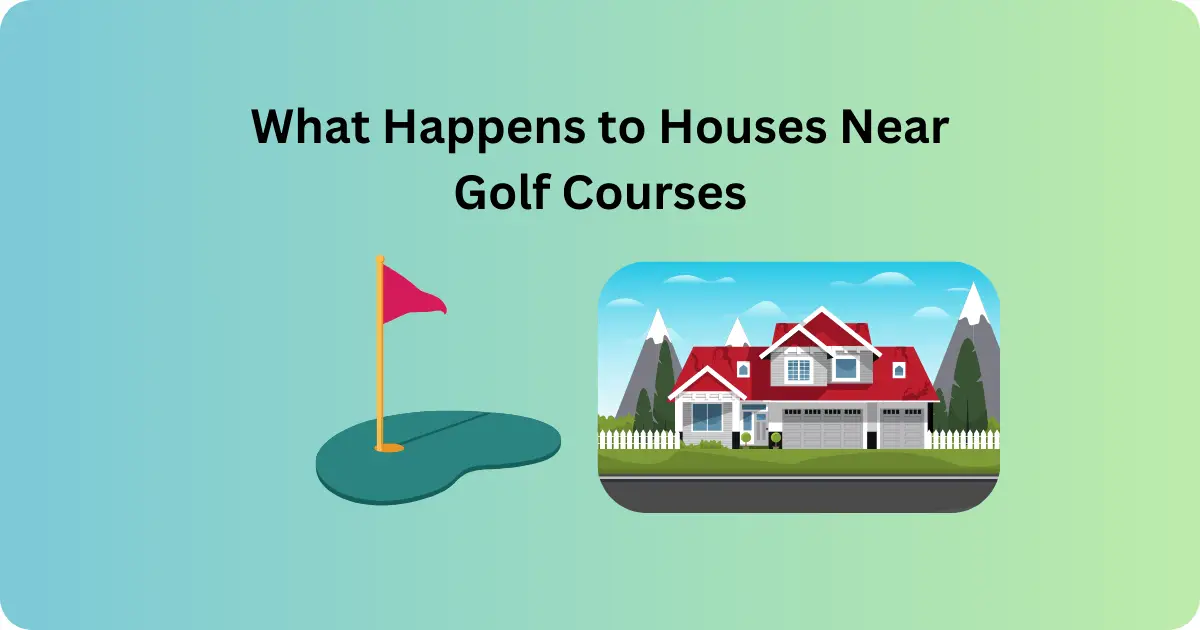When considering real estate, many homebuyers ask, “What happens to houses near golf courses?” This question is crucial for potential buyers, investors, and anyone interested in the dynamics of living close to a golf course. This blog post will explore the benefits, possible drawbacks, and overall impact of living near these lush greens, providing valuable insights for your property decisions.
Benefits of Living Near Golf Courses
Living near a golf course has several advantages. Here are some key benefits:
- Scenic Views: Homes near golf courses often enjoy beautiful landscapes. The manicured greens and natural surroundings create a serene environment, enhancing the property’s overall aesthetic appeal.
- Increased Property Values: Houses near golf courses tend to have higher property values. The proximity to recreational amenities can attract buyers, making these properties more desirable in the real estate market.
- Recreational Opportunities: For golf enthusiasts, having a course nearby means easy access to the sport. Residents can play more frequently, improving their skills and enjoying a leisurely lifestyle.
- Community and Networking: Golf courses often foster a sense of community. Living nearby can lead to social opportunities with fellow golfers and neighbours, making it easier to connect with like-minded individuals.
Potential Drawbacks of Houses Near Golf Courses
While there are numerous benefits, potential drawbacks also exist for those considering purchasing homes near golf courses:
- Noise and Activity: Depending on the course’s layout, homes may experience noise from golfers or maintenance equipment. It can be a concern for those seeking tranquillity.
- Maintenance and Upkeep: Proximity to a golf course may require homeowners to invest in additional maintenance, such as landscaping. Golfers’ presence can lead to stray balls landing in yards, which can be inconvenient.
- Limited Privacy: Living near a golf course may affect your privacy. Golfers and maintenance staff may be visible from your property, which could be a consideration for some buyers.
- Insurance Concerns: Homes near water hazards or bunkers may face higher insurance rates due to potential damage risks. It’s essential to research the insurance implications before purchasing.
Conclusion
In summary, understanding what happens to houses near golf courses is vital for anyone considering a real estate investment in these areas. While the scenic views, increased property values, and recreational opportunities are enticing, potential drawbacks like noise and limited privacy should not be overlooked.
Ultimately, weighing these factors will help you decide whether living near a golf course aligns with your lifestyle and investment goals. If you’re considering a move or investment in a golf course community, thoroughly research the area to find the best fit for you!
FAQs
Do houses near golf courses have higher property values?
Homes near golf courses often have higher property values due to the desirable location and recreational amenities.
What are the downsides of living near a golf course?
Potential downsides include noise from golfers, limited privacy, and increased maintenance due to stray balls and landscaping needs.
Are golf course communities a good investment?
Golf course communities can be a good investment, but it’s essential to consider market trends, property values, and lifestyle preferences.
How does living near a golf course affect insurance rates?
Due to the increased risk of damage, insurance rates may be higher for homes near golf courses, especially if they are near water hazards or bunkers.
Can living near a golf course be noisy?
Living near a golf course can be noisy, especially during peak golfing hours or maintenance activities, which may disrupt the peaceful environment.

James Smith is the author of a website called Golf Mentally. He believes that golf is as much about thinking as it is about swinging the club.
Golf Mentally helps golfers of all levels. It teaches new golfers the basics, like how to hold the club and hit the ball. It also helps more experienced golfers learn new things and improve their game.
James wants to help golfers think smart on the course, not just hit the ball hard. He believes that by thinking about your shots and staying positive, you can play much better golf.

